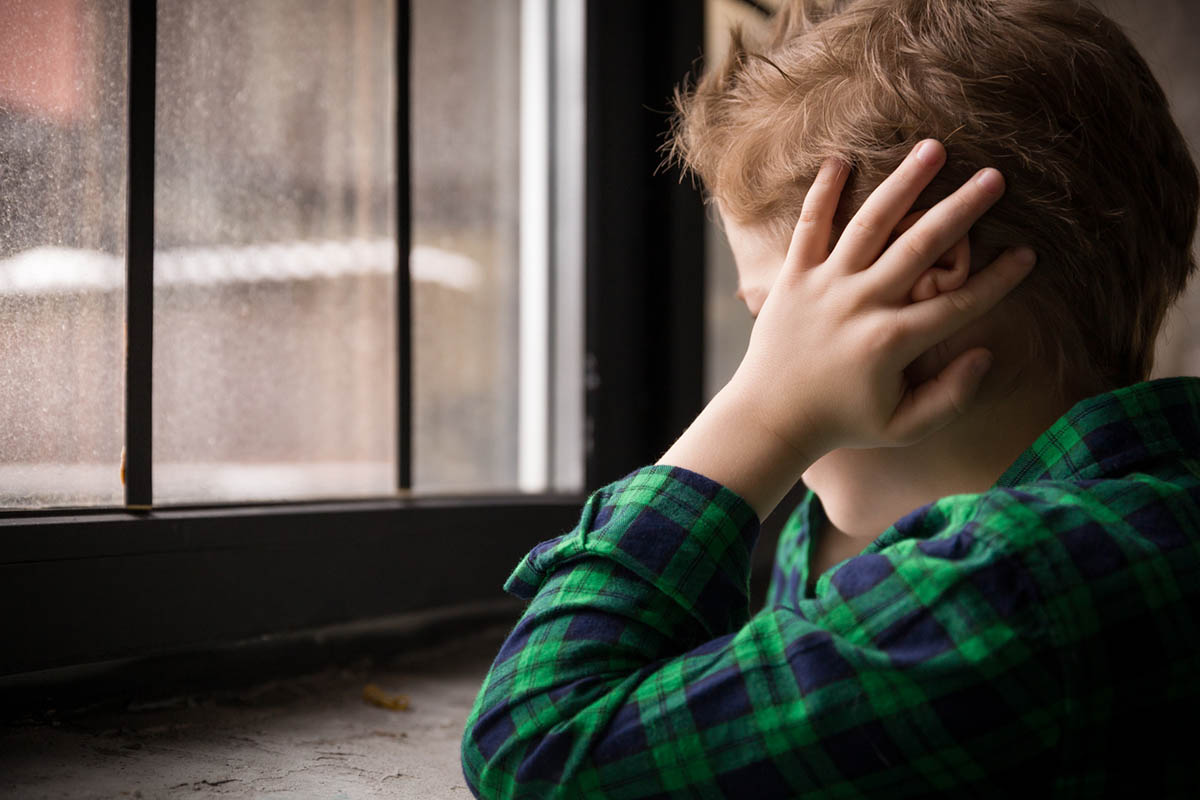Because this piece does not have an abstract, we have provided for your benefit the first 3 sentences of the full text.
In this issue of the Journal, Madsen et al report on the use of mental health services by Danish soldiers who were deployed to Afghanistan and the association between help seeking and posttraumatic stress disorder (PTSD). To do this, the authors had access to the type of data most researchers only ever dream about. They had longitudinal self-report and medical record data on 703 Danish soldiers at 4 time points (pre-deployment, homecoming, 7 months postdeployment, and 2.5 years postdeployment).
See article by Madsen et al
This work may not be copied, distributed, displayed, published, reproduced, transmitted, modified, posted, sold, licensed, or used for commercial purposes. By downloading this file, you are agreeing to the publisher’s Terms & Conditions.

The Complex Relationship Between Posttraumatic Stress Disorder and Help Seeking
In this issue of the Journal, Madsen et al1 report on the use of mental health services by Danish soldiers who were deployed to Afghanistan and the association between help seeking and posttraumatic stress disorder (PTSD). To do this, the authors had access to the type of data most researchers only ever dream about. They had longitudinal self-report and medical record data on 703 Danish soldiers at 4 time points (pre-deployment, homecoming, 7 months postdeployment, and 2.5 years postdeployment). Three key findings emerge: as time since deployment increases, so do rates of PTSD; those with high levels of PTSD symptomatology are more likely to use mental health services than are those with lower levels of symptoms; and those with high levels of PTSD symptoms are more likely to receive psychotherapy.
So how does this article add to what we know about the trajectory of PTSD symptoms, treatment seeking, and type of treatment received among military personnel? The answer is not straightforward, since previous studies on these topics have not always given consistent results.
While rates of PTSD vary across studies and time periods, longitudinal studies in nonmilitary trauma survivors generally report decreasing prevalence over time,2 although this pattern of symptom reporting often occurs following a single traumatic exposure rather than the sequential exposures commonly experienced by deployed military personnel. So one might expect the same picture to be observed among military samples—as time since return from deployment increases, the reporting of symptoms should decrease. So Madsen and colleagues’ 1 finding of an increase in symptoms postdeployment may be unexpected. But their finding actually fits to some extent with what has been observed in both the UK3 and US4,5 militaries. However, there are differences in the scale of the increase—being much more evident among US personnel4,5 than those of the United Kingdom3 or Denmark.1
It is unsurprising that those most in need (ie, those with the most symptoms) report high rates of help seeking.6 However, the military is a male-dominated population, and, among males, treatment seeking is often low.7 What barriers have these personnel had to overcome to access treatment? A recent meta-analysis8 of 20 studies showed that approximately 60% of military personnel who experience mental health problems do not seek help, with one of the most frequently reported barriers being concerns about stigma. Madsen and colleagues’ 1 work shows that although these barriers exist, personnel have still accessed and engaged with services. This finding again fits with the recent meta-analysis8 that shows that 9 studies found no association between stigma and help-seeking intentions/mental health service use, with 1 study finding a negative association between self-stigma and intentions to seek help. So perhaps once symptoms reach a certain level, personnel will seek help irrespective of the concerns of stigma they may hold. Or other factors could be the trigger for help seeking; for example, a qualitative study9 among UK military personnel showed that a crisis in their personal life was the main reason for help seeking.
How usual is it to have psychotherapy for PTSD? Among the UK military, there is a low level of treatment seeking, in particular, among those with PTSD. Of those who seek help, 6% were receiving cognitive behavioral therapy and another 47% were receiving another form of psychotherapy or counseling.10 The National Institute of Clinical Excellence in the United Kingdom states that "all PTSD sufferers should be offered a course of trauma-focused psychological treatment (trauma-focused cognitive behavioural therapy or eye movement desensitisation and reprocessing). These treatments should normally be provided on an individual outpatient basis."11(p63)
What about comorbidity? It is well known that PTSD is not the only mental health condition that may develop after trauma.12,13 To understand the role that other conditions may play in the trajectory of PTSD symptoms, treatment seeking and presentation are relevant to this population.
Understanding the rates of PTSD, how these rates change over time, and access to treatment are critical factors required to develop and enhance our management of postdeployment mental health conditions. It is important that we reduce barriers and increase treatment options to improve access and treatment adherence. The results of studies like this of Madsen et al1 have implications for health care planners, policymakers, and the military.
Finally, care must always be taken before extrapolating from one country to another. Denmark has a remarkable reputation when it comes to population-based data and record linkage, implying a degree of trust and cooperation between citizens, government, and researchers rarely seen outside Scandinavia that is the reason for the envy we expressed at the start of this commentary. It is possible that other features of Denmark’s social democracy, such as its health care system, mean that the results of studies like this, while definitive within Scandinavia, may be equally less generalizable outside.
Potential conflicts of interest: Professor Fear is a trustee of Warrior, a charitable organization that provides support to ex-Service personnel and their families. Dr Jones is a full time member of the UK reserve services. Professor Sir Wessely is Civilian Consultant Advisor in Psychiatry to the Army, Chair of the Royal College of Psychiatrists, and a trustee of Combat Stress.
Funding/support: None reported.
REFERENCES
1. Madsen T, Andersen SB, Karstoft K-I. Are posttraumatic stress symptoms related to mental health service use? a prospective study of Danish soldiers deployed to Afghanistan. J Clin Psychiatry. 2016;77(10):e1226-e1232.
2. Shalev AY, Freedman S, Peri T, et al. Prospective study of posttraumatic stress disorder and depression following trauma. Am J Psychiatry. 1998;155(5):630-637. PubMed doi:10.1176/ajp.155.5.630
3. Fear NT, Jones M, Murphy D, et al. What are the consequences of deployment to Iraq and Afghanistan on the mental health of the UK armed forces? a cohort study. Lancet. 2010;375(9728):1783-1797. PubMed
4. Milliken CS, Auchterlonie JL, Hoge CW. Longitudinal assessment of mental health problems among active and reserve component soldiers returning from the Iraq war. JAMA. 2007;298(18):2141-2148. PubMed doi:10.1001/jama.298.18.2141
5. Vasterling JJ, Proctor SP, Friedman MJ, et al. PTSD symptom increases in Iraq-deployed soldiers: comparison with nondeployed soldiers and associations with baseline symptoms, deployment experiences, and postdeployment stress. J Trauma Stress. 2010;23(1):41-51. PubMed doi:10.1002/jts.20487
6. Hines LA, Goodwin L, Jones M, et al. Factors affecting help seeking for mental health problems after deployment to Iraq and Afghanistan. Psychiatr Serv. 2014;65(1):98-105. PubMed doi:10.1176/appi.ps.004972012
7. Galdas PM, Cheater F, Marshall P. Men and health help-seeking behaviour: literature review. J Adv Nurs. 2005;49(6):616-623. PubMed doi:10.1111/j.1365-2648.2004.03331.x
8. Sharp ML, Fear NT, Rona RJ, et al. Stigma as a barrier to seeking health care among military personnel with mental health problems. Epidemiol Rev. 2015;37:144-162. PubMed doi:10.1093/epirev/mxu012
9. Murphy D, Hunt E, Luzon O, et al. Exploring positive pathways to care for members of the UK Armed Forces receiving treatment for PTSD: a qualitative study. Eur J Psychotraumatol. 2014;5. PubMed doi:10.3402/ejpt.v5.21759
10. Iversen AC, van Staden L, Hacker Hughes J, et al. Help-seeking and receipt of treatment among UK service personnel. Br J Psychiatry. 2010;197(2):149-155. PubMed doi:10.1192/bjp.bp.109.075762
11. National Institute for Health Care Excellence. Post-Traumatic Stress Disorder (PTSD): the management of PTSD in adults and children in primary and secondary care. NICE Clinical Guideline 26. NICE Web Site. https://www.nice.org.uk/guidance/cg26/evidence/full-guideline-including-appendices-113-193442221. March 2005.
12. Brady KT, Killeen TK, Brewerton T, et al. Comorbidity of psychiatric disorders and posttraumatic stress disorder. J Clin Psychiatry. 2000;61(suppl 7):22-32. PubMed
13. Debell F, Fear NT, Head M, et al. A systematic review of the comorbidity between PTSD and alcohol misuse. Soc Psychiatry Psychiatr Epidemiol. 2014;49(9):1401-1425. PubMed doi:10.1007/s00127-014-0855-7
aKing’s Centre for Military Health Research and Academic Department of Military Mental Health, King’s College London, London, United Kingdom
*Corresponding author: Nicola T. Fear, DPhil (Oxon), King’s Centre for Military Health Research, King’s College London, Weston Education Centre, 10, Cutcombe Road, London SE5 9RJ, UK ([email protected]).
J Clin Psychiatry 2016;77(10):e1350-e1351
dx.doi.org/10.4088/JCP.15com10559
© Copyright 2016 Physicians Postgraduate Press, Inc.
This PDF is free for all visitors!




